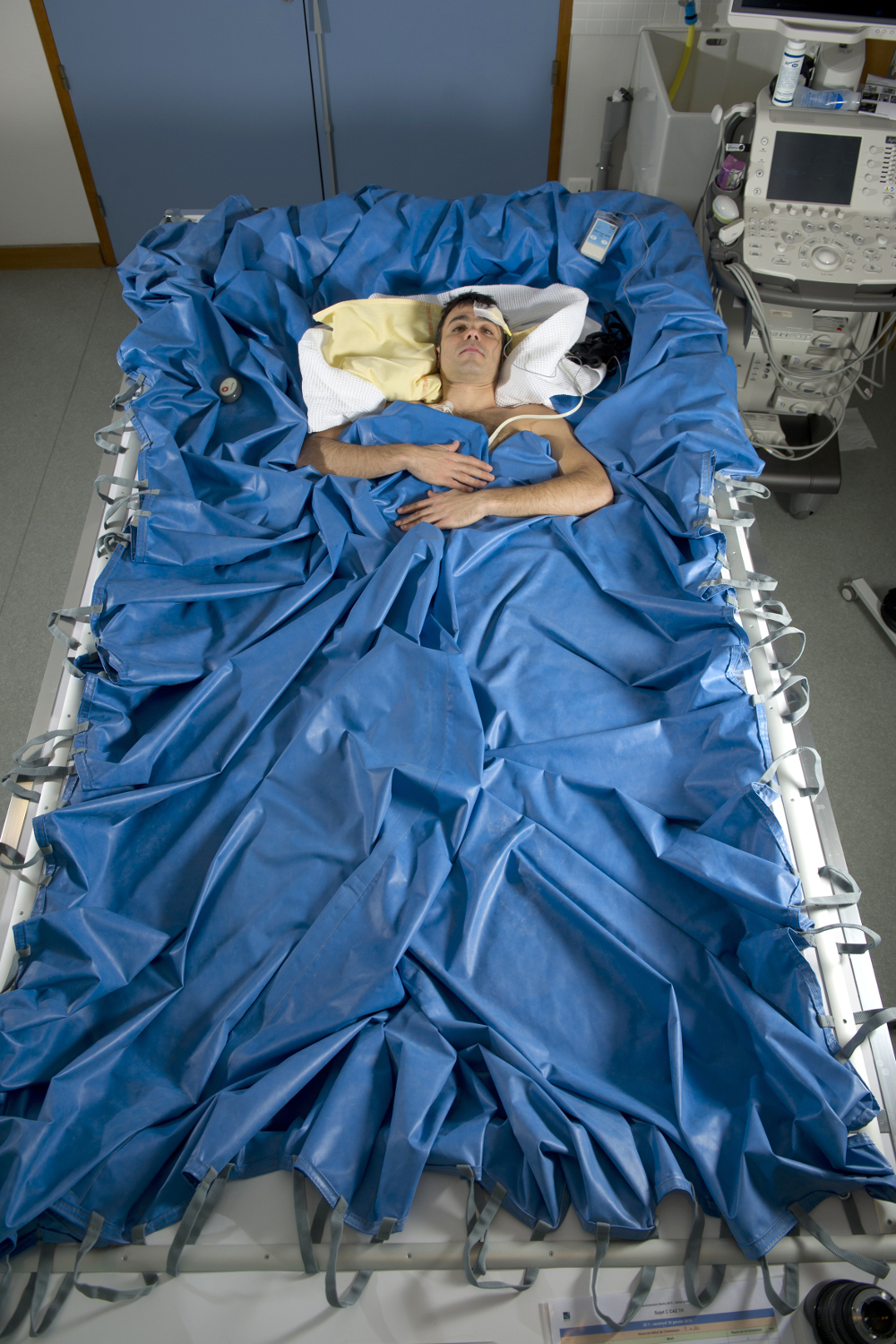“Dry immersion” study
Date :
2015
State of progress :
Ended
Objectives :
Study of the effects of spaceflight on the human body
Study of dry immersion as a simulation model
Partners :
CNES
Unique in Europe !
MEDES has conducted a clinical study on behalf of CNES. The objective was to study a ground simulation model called “dry immersion” concerning the effects of weightlessness.
This was the very first study using the dry immersion model in Europe !
The model was developed and used by Russian scientists. Until now, it had not been truly studied in Europe, where the “bed rest” model is more commonly used. MEDES has already carried out many studies of this type, testing prevention methods such as exercise, adapted nutrition, a drug solution, artificial gravity, vibration exercises, etc.
This new “dry immersion” model seemed interesting because it apparently induces certain physiological effects that the bed-rest model cannot faithfully reproduce and would therefore complement the latter.
The key advantage of dry immersion is its ability to simulate a support-free environment; the support is spread uniformly across the whole body area. The human body interprets dry immersion as being free of any kind of support, a situation comparable to that of real microgravity. The other factors acting simultaneously on the human body during immersion are linked to the lack of virtually all physical activity, due to a decrease in movements, the absence of body weight and the pressure of the water. The dry immersion model also makes it possible to quickly reproduce the effects of weightlessness on the sensory, motor and cardiovascular systems.
The CNES therefore decided to carry out this initial study – considered as a pilot study – to assess the effects of this model and its value.

How the study was conducted
The subjects were installed in a sort of bath (2.10m x 1.10m x 0.85m) that had been specially designed for this use and filled with water. A special elastic waterproof fabric was fixed on the outside edge of the tub to stop the subjects from touching the water.
The study was conducted in February 2015, on the premises of the Space Clinic. Twelve healthy, male volunteers (aged between 20 and 45) took part in the study.
Each of the subjects remained “immersed” for 3 days. In addition to this, the volunteers spent 3 days having basic measurements carried out beforehand and then a further 2 days post-immersion in order for comparative measurement to be conducted and to allow them to recover.
Many measurement and evaluations were carried out during the study. They can be put into two categories:
- Standard tests (called Baseline Core Data), which are carried out in all studies of this type,
- The tests provided for in the scientific protocols.
This study, the first of its kind, marked the use of this new weightlessness simulation model for the CNES and then for the ESA, whose recent studies have been carried out.

Nos actualités
Nos projets
Une question ?
Devenir volontaire ?
Nos études cliniques
Urgent ! Recrutement volontaires
